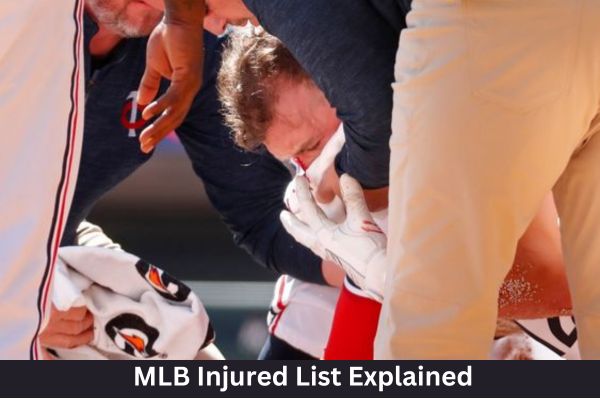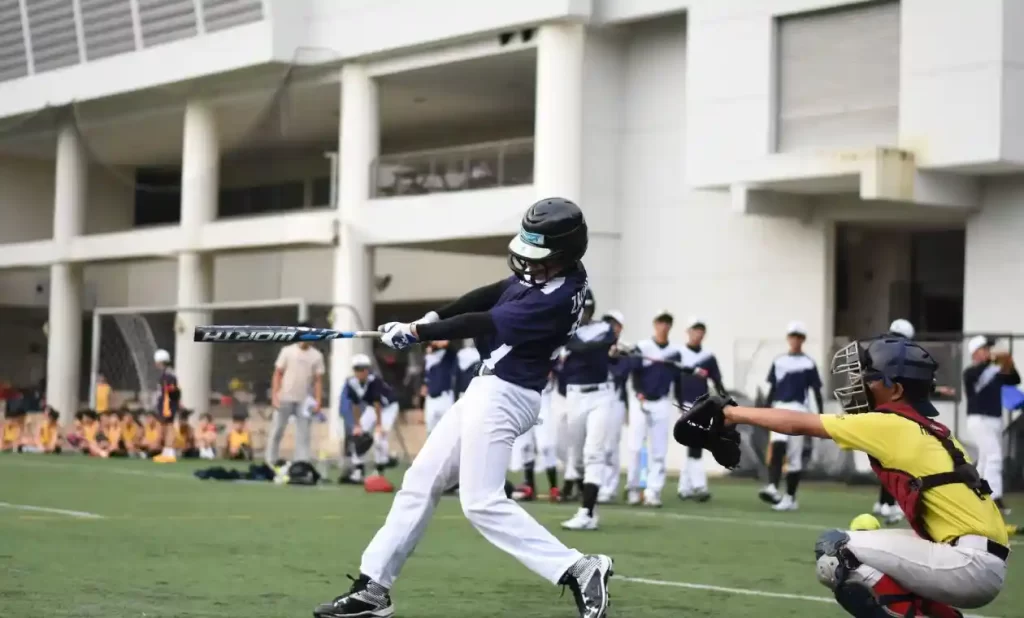
In the world of Major League Baseball (MLB), the Injured List plays a crucial role in managing player health and team dynamics. The MLB Injured List is a designated roster where players are placed when dealing with injuries, creating a temporary void in the team lineup. Understanding the ins and outs of this list is paramount for fans and enthusiasts alike.
This list isn’t merely a sideline for injured players; it’s a strategic move by teams to ensure the well-being of their athletes while maintaining competitive balance. The MLB Injured List operates on different durations, ranging from a short 7-day stint to an extended 60-day period, each designed to accommodate various injury severities.
For baseball aficionados, comprehending the rules surrounding the Injured List is like decoding the playbook of the game. It sheds light on the ebb and flow of team strategies, showcasing how organizations navigate the challenges posed by player injuries.
As we delve into the specifics, we’ll uncover the significance of each tier of the Injured List, explore how long players can stay on each list, and address commonly asked questions. So buckle up as we embark on a journey to demystify the MLB Injured List, revealing its impact on the game, the players, and the strategies that shape America’s favorite pastime.
What Is MLB Injured List?
The MLB Injured List, formerly known as the Disabled List, is a designated roster where Major League Baseball teams place players who are dealing with injuries or health-related issues. Its primary purpose is to allow teams to manage their rosters effectively in the face of player injuries, ensuring that teams can maintain a competitive edge while prioritizing the well-being of their athletes.
Definition and Purpose
- Player Rehabilitation: The Injured List serves as a platform for players to focus on their recovery without the pressure of actively participating in games. It enables them to undergo rehabilitation programs and medical treatments to regain their optimal playing condition.
- Roster Management: From a team perspective, the Injured List is a crucial tool for roster management. When a player is placed on the Injured List, teams are allowed to replace them on the active roster with another player, preventing a short-handed situation during games.
- Strategic Decision-Making: Teams strategically utilize the Injured List to navigate the ups and downs of a season. By placing a player on the list for a specific duration, teams can adjust their lineups, bring in replacements, and make tactical decisions to ensure a balanced and competitive roster.
- Historical Context: The concept of an injured or disabled list in baseball has evolved over time. Initially introduced in the early 20th century, the idea was to provide teams with a mechanism to address injuries systematically. As the game and medical understanding progressed, so did the rules surrounding player injuries.
In recent years, there have been changes to the Injured List rules, including adjustments to the duration of stay for different injury lists. These changes aim to strike a balance between maintaining the integrity of the game and prioritizing player health.
Understanding the historical context of the MLB Injured List allows fans to appreciate the league’s commitment to adapting and improving, ensuring that players are given the necessary support and time to recover while keeping the game dynamic and competitive.
Different Tiers of Injured List
Explaining the 7-Day Injured List
The 7-day Injured List is a relatively short-term designation designed for players dealing with minor injuries or health issues that require a brief period of rest and recovery. This tier is often used for injuries that don’t demand an extended absence from play but still necessitate a temporary break. Examples include mild concussions, muscle strains, or short-term illnesses.
Purpose
- Allows players to recuperate without putting additional strain on their condition.
- Provides teams with flexibility in managing minor injuries without a significant impact on the roster.
Rules
- Players must spend a minimum of seven days on this list before being eligible to return.
- Teams can replace the injured player on the active roster during this period.
Understanding the 15-Day Injured List
The 15-day Injured List is a mid-range designation intended for players with injuries that require a more substantial recovery period but are not severe enough for the extended absence mandated by the 60-day Injured List. This tier accommodates a variety of injuries, such as moderate sprains, fractures, or illnesses that need a few weeks for proper healing.
Purpose
- Allows players a sufficient recovery period without the extended absence required by the 60-day list.
- Provides teams with a strategic window to adjust rosters for a short-term impact.
Rules
- Players must spend a minimum of 15 days on this list before being eligible to return.
- Teams can replace the injured player on the active roster during this period.
In-Depth Look at the 60-Day Injured List
The 60-day Injured List is reserved for more severe injuries that necessitate an extended absence from play. This tier provides teams with greater flexibility in managing their rosters for an extended period, allowing for comprehensive rehabilitation for players with significant injuries or undergoing surgeries.
Purpose
- Accommodates players with substantial injuries requiring a more extended recovery period.
- Provides teams with the flexibility to make significant roster adjustments during the player’s absence.
Rules
- Players must spend a minimum of 60 days on this list before being eligible to return.
- Teams can replace the injured player on the active roster during this extended period.
Understanding the distinctions between these tiers enables fans to grasp the severity of a player’s injury and the strategic decisions teams make to ensure both player well-being and continued competitiveness.
Strategies for Teams and Players
How Teams Manage Player Injuries Strategically
Managing player injuries is a delicate yet strategic aspect of a baseball team’s operations. Teams employ various strategies to navigate the challenges posed by injured players, ensuring the overall well-being of their athletes while maintaining a competitive edge.
Injury Assessment and Rehabilitation
- Teams invest in advanced medical staff to assess and diagnose injuries promptly.
- Tailored rehabilitation programs are designed to expedite recovery while minimizing the risk of re-injury.
Roster Adjustments
- Teams strategically use the Injured List to free up roster spots when players are sidelined.
- Temporary replacements are brought in to maintain a balanced and competitive lineup.
Strategic Timing of Returns
- Teams may strategically time a player’s return from the Injured List to coincide with crucial stretches of the season or important matchups.
- Ensures that key players are available for pivotal games.
Player Rotation and Positional Adjustments
- Teams adjust player rotations and positions to compensate for the absence of key players.
- Versatile players may be utilized in different positions to address gaps in the lineup.
Communication and Transparency
- Open communication between coaching staff, medical personnel, and players is vital.
- Transparent communication with fans and media helps manage expectations and fosters trust.
Impact on Team Dynamics
Team Chemistry
- Injuries can disrupt the established chemistry within a team. Maintaining morale and camaraderie becomes crucial during these periods.
- Successful teams often build resilience, rallying together in the face of adversity.
Leadership and Emerging Talents
- In the absence of key players, emerging talents have an opportunity to step up and showcase their abilities.
- Team leaders play a pivotal role in guiding and motivating the team through challenging phases.
Strategic Adjustments
- Coaches may implement strategic adjustments in gameplay to compensate for the absence of specific players.
- Emphasis on teamwork and adapting strategies to suit the available roster.
Fan Engagement
- The team’s performance during injury-riddled periods can significantly impact fan engagement.
- Successful management of injuries and continued competitiveness resonate positively with the fan base.
Long-Term Planning
- Teams engage in long-term planning, considering the impact of injuries on the overall season.
- Managing player workload and providing adequate rest become crucial elements of team strategy.
Understanding these strategies and their resulting impact on team dynamics provides fans with a deeper insight into the intricacies of baseball beyond the on-field action. It showcases the resilience and adaptability of teams in the face of challenges, contributing to the rich narrative of the sport.
Comparisons with Other Sports
While the MLB Injured List is a unique feature within baseball, similar concepts exist in other sports to address player injuries and roster management. Let’s explore how MLB’s injured list compares with these concepts in other sports:
NFL’s Injured Reserve (IR) in American Football
MLB Injured List vs. NFL Injured Reserve
- Duration: MLB has varying lists (7, 15, and 60 days), while the NFL’s IR often means a player is out for the entire season.
- Roster Impact: MLB teams can replace players on the injured list; NFL teams may not replace a player on IR during the season.
NBA’s Injured List in Basketball
MLB Injured List vs. NBA Injured List
- Duration: Both have different timelines for injuries (MLB: 7, 15, 60 days; NBA: day-to-day, short-term, long-term).
- Replacement Rules: MLB teams can replace players; NBA teams may apply for a hardship exception for roster expansion.
Football/Soccer’s Injured Players List
MLB Injured List vs. Football/Soccer Injuries
- Nature of Sport: Baseball injuries may include specific impact injuries (e.g., sliding injuries); soccer injuries often involve strains and sprains.
- Game Impact: Baseball’s long season allows for player rotation, while soccer teams may struggle with immediate player shortages.
NHL’s Injured Reserve in Ice Hockey
MLB Injured List vs. NHL Injured Reserve
- Injury Severity: NHL injuries may include concussions and fractures; the MLB has varying lists for different injury severities.
- Replacement Dynamics: There are similarities in allowing replacements, but the NHL often deals with more immediate returns to play.
Australian Rules Football’s Injured List
MLB Injured List vs. Australian Rules Football
- Contact Nature: Both sports involve physical contact, but Australian Rules Football is known for its high-impact collisions.
- List Duration: MLB has specific timelines; Australian Rules Football may have varied durations depending on the injury severity.
Basketball’s EuroLeague Injured Players List
MLB Injured List vs. EuroLeague Injured Players List
- League Dynamics: MLB is centralized in North America, while the Euro League involves teams from multiple European countries.
- List Structure: Both leagues have structured injury lists but may differ in specific rules and replacement dynamics.
Understanding these comparisons provides fans with insights into how different sports manage and address player injuries. Each sport’s approach reflects its unique characteristics, schedules, and gameplay, showcasing the adaptability of leagues to the specific needs of their athletes.
Conclusion
Unraveling the intricacies of the MLB Injured List reveals a strategic dimension crucial to the dynamics of Major League Baseball. We’ve explored the three tiers of the Injured List – the brief respite on the 7-day list, the moderate hiatus on the 15-day list, and the extended absence on the 60-day list.
Teams strategically navigate player injuries by assessing, rehabilitating, and making roster adjustments. This strategic dance is not merely about managing injuries; it’s a delicate choreography to ensure player well-being while maintaining a competitive edge.
Understanding the impact of injuries on team dynamics reveals the resilience and adaptability inherent in successful baseball franchises. From emerging talents stepping into pivotal roles to leaders guiding the team through adversity, the Injured List becomes a canvas for teams to showcase their depth and strategic prowess.
As fans, grasping these nuances enhances our appreciation for the ebb and flow of a baseball season. The Injured List isn’t just a sideline for hurt players; it’s a dynamic tool shaping the narrative of the game. So, whether it’s the tactical timing of a player’s return or the temporary adjustments to team dynamics, every aspect contributes to the rich tapestry of America’s favorite pastime.
As we continue to cheer for our teams, understanding the MLB Injured List becomes not just a part of the game but a key to appreciating the resilience, strategy, and human elements that make baseball an enduring spectacle.
How much did you like Decoding the Mystery: MLB Injured List Explained? Share your view in the comment box. Also, share this blog with your friends on social media so they can also enjoy it. For more blogs, visit baseballpropicks.com
Related Article:
- Cultural Impact: Baseball Caps in Fashion
- Understanding the Basics of Baseball
- Historical Moments in Baseball
- Inside Baseball: The Core Cover
- Best Baseball Gloves by Positio

Meet Daniel Anderson, the heart and soul behind Baseball Pro Picks. At 49, Daniel’s life has revolved around baseball, a passion that’s as strong today as it was when he first fell in love with the game. Living in the USA, Daniel has dedicated countless hours to watching, analyzing, and understanding every pitch, hit, and home run, making almost no game missed. His deep-rooted love for the sport is matched only by his commitment to sharing insightful, expert analysis with fellow baseball enthusiasts. With decades of experience and a keen eye for the game’s nuances, Daniel brings a unique perspective that enriches Baseball Pro Picks. Trust Daniel to guide you through the intricacies of baseball with the authority and trustworthiness of a true aficionado.












